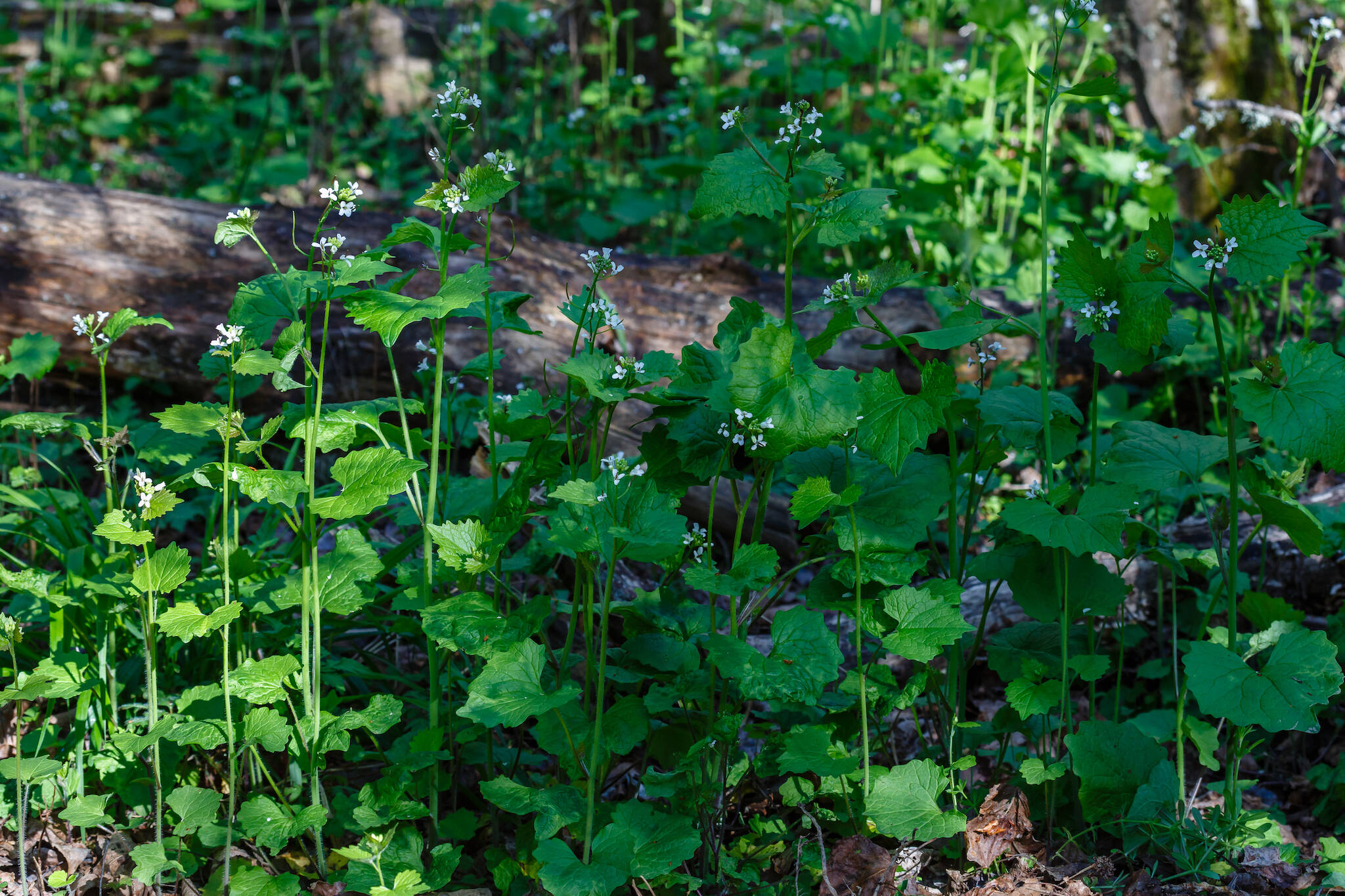
Invasive plant species is wreaking havoc in Toronto and you can help by eating it
As temperatures begin to rise in Toronto and plants begin to bloom, so too means the resurgence of one of the province's most problematic and "aggressive forest invaders"— garlic mustard.
The edible herb, which was originally brought over to North America from Europe in the 1800s, has been wreaking havoc across Toronto's ravines and natural landscapes over the past several years by displacing native wildflowers and plants.
As its name suggests, the plant has a strong, distinctive garlic smell when crushed, which helps distinguish it from some other similar-looking native plants in Ontario.
Garlic mustard has two distinct life stages over its first years. In the first year, it only grows a cluster of dark green, kidney-shaped leaves with scalloped edges, while a strong root system develops.
Second-year plants can grow up to 1.2 metres with high triangular, sharply toothed leaves and white flowers with four small petals which typically bloom in May.
At first glance, the plants appear to be harmless, but that's before you account for the fact that they can easily double in size every four years and can remain in soil for up to 30 years and still be able to sprout.
Moreover, the plants can virtually grow in any type of environment, including most sunny and fully shaded habitats like forests, riverbanks, and roadsides.
The problematic herbs can quickly invade relatively undisturbed forests, displacing wildflowers like trilliums, trout lily, and hindering other plants by interfering with the growth of fungi.
According to the provincial government, the plant threatens several of Ontario's species at risk, including American ginseng, drooping trillium, Eastern false rue-anemone, hoary mountain mint, white wood aster, wild hyacinth, and wood poppy.
The herb itself is not the best source of food or nutrients for local animals, so the good news is you can help fight off its invasion by eating it.
The plant reportedly makes a great addition to savoury dishes and is high in both vitamins A and C. Foragers usually harvest the plants when young, as older plants need to be cooked thoroughly due to the cyanide they contain.
If you're planning on consuming the herb, make sure to harvest the whole plant, roots and all, to help prevent its spread, and be sure not to forage it from a public property where it might have been treated with pesticides.
LFRabanedo/Shutterstock
Latest Videos
Latest Videos
Join the conversation Load comments







